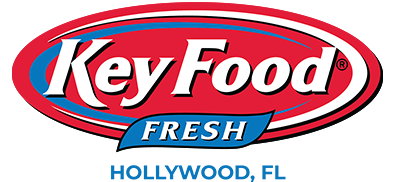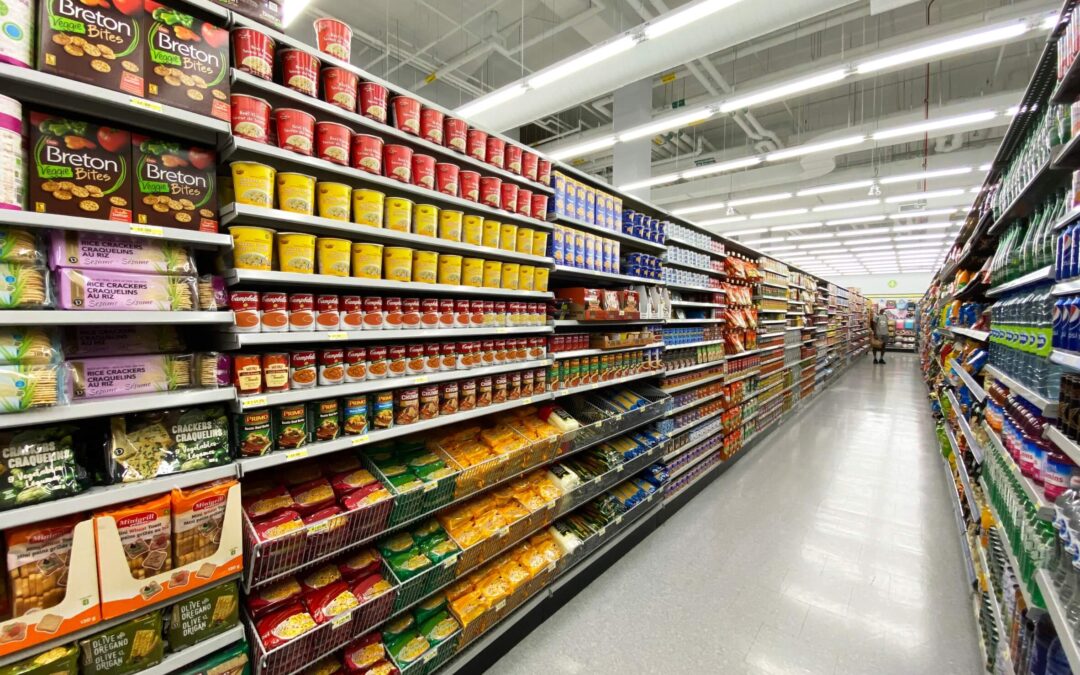A trip to the grocery store might seem simple, until you’re standing in front of the meat counter, wondering if those cuts are really fresh or if you’re paying too much for lower quality. For anyone shopping at a Hollywood grocery store, a little know-how can mean safer meals, better flavor, and real value. Here’s everything you need to make confident choices when buying beef, chicken, and pork in Hollywood.
Freshness Comes First
When it comes to fresh meat near me, nothing is more important than true freshness. It protects your family’s health and guarantees the flavor your recipes deserve.
- Beef: Look for a deep red color and even marbling of white fat. Marbling melts during cooking, giving beef tenderness and a richer taste.
- Pork: The best pork is light pink with a slight natural sheen and firm texture. Avoid grey tones or excess liquid in the packaging.
- Chicken: Fresh chicken should be light pink and moist, never slimy, with a mild, clean scent.
If you see discoloration, pooling liquid, or notice an off smell, the meat has likely been sitting too long.
Know The Value of Skilled Butchers in Supermarkets
One reason families prefer a full-service Hollywood grocery store is the in-house butcher. Good butchers in supermarkets do more than wrap cuts:
- Answer questions: They can tell you when the meat arrived and how it has been stored.
- Custom cuts: Need steaks cut thick for the grill or chicken trimmed for stew? A professional butcher will do it while you wait.
- Food safety knowledge: They know proper storage temperatures and safe handling practices that protect your family.
Talking with the butcher is the easiest way to be sure your meat is handled correctly from supplier to cart.
Choosing Local Beef, Chicken, and Pork
For many families, buying local beef, chicken, and pork groceries is about more than taste. It’s also about supporting the community and reducing environmental impact.
- Better texture and flavor: Local meat spends less time in transit and doesn’t require heavy preservatives.
- Fewer chemical treatments: Shorter supply chains mean the meat retains its natural quality.
- Community support: Your purchase helps local farmers and strengthens the local food economy.
When shopping, ask the supermarket staff where their meat is sourced. Local products often deliver a noticeable difference in both taste and freshness.
Matching the Cut to the Meal
Understanding which cuts fit your recipe saves money and avoids disappointment.
- Quick dinners: Thin pork chops, boneless chicken breasts, and ground beef cook quickly and work well for weeknight meals.
- Slow cooking: Brisket, pork shoulder, and stew beef become tender and flavorful when braised or cooked in a slow cooker.
- Special occasions: Ribeye steaks, rack of lamb, or premium roasts are ideal when you want to impress guests.
If you’re unsure which cut is right, ask the butcher for advice—this is exactly what they’re trained for.
Recognizing Quality Meat
Selecting quality meat takes more than glancing at the price tag. A higher cost doesn’t always mean better flavor or safer food. Instead, focus on a few clear visual and tactile signs to be sure every cut you bring home is worth cooking.
1. Check the Color and Marbling
Look closely at the natural color of the meat.
- Beef should be a deep, vibrant red with small, even streaks of white fat, called marbling, running through the muscle. Marbling melts as the beef cooks, keeping it tender and full of flavor.
- Pork should appear light pink with a slight, healthy sheen. Avoid cuts that look dull or gray.
- Chicken should be a pale pink and slightly moist, without any spots of discoloration.
Consistent, natural color and evenly distributed fat indicate the meat has been properly handled and kept at the right temperature from the supplier to the store.
2. Test the Texture
Gently press the surface of the meat. Quality cuts feel firm and spring back to their original shape rather than leaving an indentation. Beef or pork that feels mushy or slimy, or chicken that has a sticky surface, has likely been sitting too long or wasn’t stored correctly.
3. Inspect the Packaging
The way meat is wrapped tells you a lot about how it has been handled.
- Vacuum-sealed packages should be tightly closed with no tears or air pockets.
- If the meat is on a tray, the plastic wrap should cling tightly with no punctures and only a small amount of natural juices, excess liquid can mean the meat is old or has been frozen and thawed.
- Always check the sell-by date to ensure it’s still within the recommended window for freshness.
4. Trust Your Senses
Even if the meat looks good, a strong or sour odor is a red flag. Fresh meat has a clean, mild scent. If something smells off, it’s best to skip it.
By paying attention to color, marbling, texture, and proper packaging, and trusting your sense of smell, you can confidently choose meat that will cook evenly, taste better, and stay safe for your family’s meals.
Keeping Meat Safe from Store to Kitchen
Food safety continues after checkout. Protect your purchase by:
- Bringing an insulated bag or cooler on hot days.
- Going straight home and refrigerating meat within two hours.
- Freezing cuts you won’t use within a couple of days.
Safe handling keeps your family healthy and prevents costly waste.
Plan Your Grocery Budget Around Meat
Meat is often the most expensive part of a grocery bill. A smart grocery shopping budget helps you get more for your money:
- Look for weekly grocery deals and specials before you shop.
- Consider family packs or bulk cuts and freeze portions for later.
- Compare unit prices on shelf labels to spot true value.
These habits stretch your budget without sacrificing quality.
Preparing for Holidays and Big Gatherings
During holiday seasons or large family events, meat demand spikes. Planning ahead is essential for holiday grocery shopping in Hollywood.
- Order special cuts, like roasts or lamb, a few days in advance.
- Ask the butcher for exact weights based on the number of guests.
- Pick up meat early in the day while supplies are at their best.
Early planning ensures you get the cuts you want at the best quality.
Why the Right Grocery Store Matters
When you’re shopping for meat, the store you choose makes all the difference. Not every supermarket treats meat with the same care, and the way it’s sourced, stored, and handled directly affects both flavor and safety. Picking the right Hollywood grocery store isn’t just about convenience; it’s about knowing that every cut you bring home is worth serving to your family.
Consistent Freshness
A reliable grocery store restocks and rotates its meat throughout the day, not just once in the morning. This means beef, chicken, and pork stay at the proper temperature and never linger past their peak. You can shop in the afternoon or evening with the same confidence as someone who arrived at opening time.
Knowledgeable Butchers
The best markets have butchers who are more than order-takers. They’ll tell you when the meat came in, explain how it’s been stored, and even recommend cuts that suit your recipe or budget. Whether you need steaks cut thicker for the grill or chicken trimmed for a slow-cooked stew, their skill ensures you get exactly what you need.
Steady, Trustworthy Selection
Running from store to store looking for specific cuts wastes time and risks settling for lower quality. The right grocery store keeps a dependable selection of fresh meat so you never have to compromise on tonight’s dinner plans.
Choosing a supermarket that meets these standards removes the guesswork from meat shopping. You’ll spend less time worrying about what’s safe or worth the price and more time enjoying meals that you can serve with confidence.
The Grocery Store in Hollywood that Families Trust for Quality Meat
For shoppers who want dependable freshness and a wide selection, Key Food Supermarket in Hollywood delivers what families expect. Browse our products to see what’s fresh this week or check their weekly specials to plan your next grocery run.
Whether you’re buying beef, chicken, or pork, Key Food’s experienced butchers make sure every cut meets the highest standards for taste and safety. When it comes to quality meat Hollywood families shop with confidence, Key Food is the best.
FAQs: Buying Quality Meat at a Hollywood Grocery Store
1. How can I tell if beef is fresh at a Hollywood grocery store?
Look for a deep, vibrant red color with fine white marbling. This even fat distribution melts during cooking, adding tenderness and flavor. Fresh beef should also feel firm to the touch and spring back when lightly pressed.
2. What should I check when buying fresh chicken?
Fresh chicken has a light pink color with a moist but not slimy surface. The scent should be clean and mild – any sour or strong odor is a warning sign. The packaging should be well sealed with no excess liquid.
3. How do I choose good quality pork?
Quality pork is pale pink with a slight natural sheen. The texture should be firm and resilient when pressed. Avoid packages with gray spots or excessive liquid, as these indicate the meat is no longer at its best.
4. Why is marbling important in meat?
Marbling refers to the thin streaks of fat within the muscle. During cooking, this fat melts and keeps the meat juicy and flavorful. Cuts with even marbling are usually more tender and taste richer.
5. What role does a supermarket butcher play in ensuring quality?
Butchers monitor how meat is stored and rotated. They can tell you when a shipment arrived, prepare custom cuts, and recommend the best options for your recipe. Talking with the butcher is the easiest way to confirm freshness.
6. Is locally sourced meat better for quality?
Often yes. Local beef, chicken, and pork usually travel shorter distances, so the meat reaches the store faster and with less need for preservatives. This means better flavor and a fresher product for your table.
7. How should I handle meat after purchase to keep it safe?
Go straight home from the store or keep meat in a cooler bag if you have other stops. Refrigerate within two hours, and if you will not cook it within a couple of days, freeze it to lock in freshness and avoid spoilage.
8. Are vacuum-sealed packages a sign of better meat?
Vacuum-sealed packaging helps prevent contamination and keeps meat fresher longer by limiting exposure to air. Make sure the seal is intact and there are no leaks or excessive liquid inside.
9. What’s the best way to plan my grocery shopping budget for meat?
Check weekly specials before heading to the Hollywood grocery store. Buying family packs or larger cuts to portion and freeze can save money. Comparing unit prices on shelf tags also helps spot true value.
10. How can I avoid buying meat that has been sitting too long?
Shop at times when the store is freshly stocked, usually early in the day or shortly after a delivery. Look for signs of daily rotation, such as meat that is well arranged and properly iced, and don’t hesitate to ask the butcher when the products came in.

